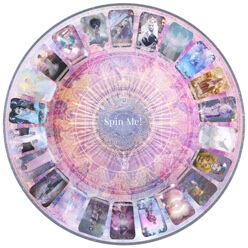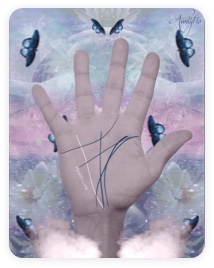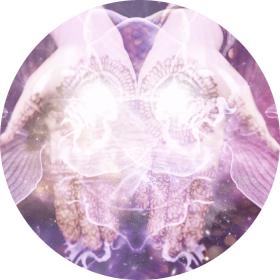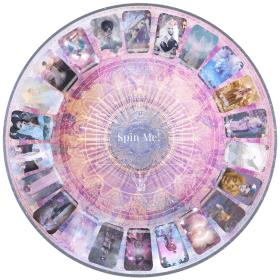Bride Superstitions

Uncover hidden superstitions meanings
Here I detail all the bride superstitions found in many ancient books.
There are many superstitions that have been recorded over the centuries, also in different religions - here we try to cover them all. In this article, you will find an overview of the general superstitions found at the wedding, characters that are traditionally found including their roles. We will then move into specific superstitions for the wedding, ancient through to modern. There is over 100 wedding superstitions included in this article. For the bride to wear white is based on the ancient symbol of purity and innocence namely the virginity of the bride. If the bride decides to wear another color it is custom to wear a silk fabric instead, to attract fortune. Satin fabric should not be worn and the reason is not known. Velvet is also not to be worn as it can suggest that it is associated with poverty. Pins left on the wedding dress is a bad omen. Pearls are normally worn as they are good luck symbols. Definitely worth a read if you are soon to get married.
Traditions of the maid of honor Firstly, the name maid of honor is the title of the queen's personal assistant. As a bride is essentially the queen on the day of the wedding the name was given to bridesmaids or the maid of honor. This is the closest person to the bride who helps dress her and prepare for the wedding. The main role of the maid of honor is to help dress the bride, hold the bouquet when required. A junior bridesmaid is normally under 16 years of age. There are many superstitions around the color hair of the bridesmaid. It has been a long tradition that the hair color is significant. Copper colored hair / red hair was often consisted unlucky. This was because it denotes an annoyed person who preferred conflict over peace, the red was also associated with the devil and traditionally those that bore such hair color should not be trusted, obviously, in modern times, this is discrimination but a popular superstition from the medieval times.
During this time people of red hair were also seen as witches and not to be trusted! This is rather shocking I know. If we look at the gypsy superstitions red hair was, however, good luck. The bridesmaid is also supposed to hold the bride’s left hand before she walked down the aisle to denote good luck to the partnership. The superstitions of the groom We now move onto the groom! traditionally it is custom for the groom to hold a stag party. This was a tradition since the fifth century. It was originally just a dinner party with family members, then extended to friends and a meal was held in the honor of the groom on the night before the wedding. In modern times the bachelor and stag parties are always done before the wedding date, often weekends away. Groomsmen The groomsman is a term widely used for the “right-hand man” it is from the “bride knights” thus, the groomsmen use to protect the groom and bride in case there was conflict or the family did not approve.
In New England the United States the kidnapping of a bride did happen therefore, the men would protect the union of the bride and groom. Some churches even went to far as to have a hidden room so the ceremony could take place! The best man always has two roles in the ceremony there were a) to prevent the bride from being kidnapped. b) to protect the rings. It is a tradition that both the groom and best man wear the same outfit, in the same color to protect against evil. The best man was also a force against anything that would stop the wedding, including if the bride changed her mind he would enforce it! A bit different from our modern day role of the groom. A flower girl Traditionally, in both Greece and Roman times there would be a child carrying a basket of herbs, she would appear before the bride entered the church. She would scatter these along the aisle before the bride walked. Each herb had a significant meaning and the herbs chosen for good luck.
Rosemary, sage, lavender and ivory roses would be scattered on the isle. Traditionally, these have good luck properties. If we look back to Elizabethan times the flower girl would spread the flowers to beautiful music, she would also visit the bride's home before the ceremony and spread the herbs on the carpet while the bride got dressed. Normally, the flower girl would be between the age of 3-9 years old. She would also have a small basket of rose petals that she would throw outside the church as the bride exits the church. Each rose denotes a different meaning: Orange: Happy marriage, Green: youth, Red: deep love, Pink: sweetness and happiness, White: pure and innocence and finally yellow which indicates fertility.
The flower girl often carried the bride's cup. This was traditionally made from gold or silver and had rosemary inside which was tied together with ribbons. The rosemary was given to guests as trinkets of thanks for attending the day. Many guests dipped this into their wine in the celebrations. White dresses would be worn by the flower girl, as well as many flowers around her hair. This girl was the last person to walk down the aisle. Ring pillow and coin bearer We have already provided an overview of the best man carrying the rings during the ceremony but the actual ring presentation has differed throughout history. For example, during the victorian times, the ring would be found on the end of a sword. More recently, a pillow would be given for the rings to be presented on. The rings bearer would normally wear white lace, matching the groom's outfit. In ancient times there used to also be a coin bearer his job was to carry coins down the aisle.
These coins would be thirteen gold coins and four silver to represent riches to the bride and groom. During the time, the coin bearer has since diminished. Day of the week to get married? The day of the week to get married has separate meanings as follows: Monday for health Tuesday for wealth Wednesday best day of all Thursday for losses Friday for crosses Saturday for no luck Interestingly, the majority of people get married on a Saturday. We will now briefly review the best months to marry and the superstitions surrounding these months.
You may wish to review these months to determine the best time to marry. January - Marry when the year is new, he will be kind loving and true. When February birds do mate, You wed nor dread your fate. If you wed when March winds blow, joy and sorrow both you'll know. Marry in April when you can, Joy for Maiden and for Man. Marry in the month of May, and you'll surely rue the day. Marry when June roses grow, over land and sea you'll go. Those who in July do wed, must labor for their daily bread. Whoever wed in August be, many a change is sure to see Marry in September's shrine, your living will be rich and fine. If in October you do marry, love will come but riches tarry. If you wed in bleak November, only joys will come, remember. When December snows fall fast, marry and true love will last. Famous wedding superstition The most popular superstition is definitely the saying: Something old, something new, something borrowed and a sixpence in your shoe. Additionally, the more modern saying is: Something old, something new, something borrowed and a something blue. So what does this mean? Something old is normally a garter that another bride has given as a gift.
This is the tradition, especially from happily married women. The something new can be the wedding dress or anything that the bride will buy that is new. Something borrowed is normally a necklace or ring borrowed from the bride's mother or someone close to them. Finally, placing a silver coin the bride's shoe is to ensure the wealth of the union. Popular wedding superstitions:
- Congratulating the bride directly is considered unlucky, it is best to congratulate the groom only.
- A money spider found in a wedding dress means good fortune is going to come to the couple.
- To have lavender at a wedding is a lucky omen.
- The best day for marriage is considered a Wednesday followed by a Monday for financial security and a Tuesday for good health in the relationship.
- Black clothes should be avoided at all costs.
- Whoever catches the bride's bouquet will next marry.
- Carrying a horseshoe is good luck.
- In terms of the groom’s dress a tuxedo was a lucky omen, worn on men which was also worn to formal dinners. The original dress of the groom was a smoking jacket designed by the Tuxedo Park Club, this because extremely popular and the Tuxedo club created this jacket - hence the name.
- The actual meaning of being carried over the threshold is to ensure that the bride is not taken by any evil spirits.
- English superstitions denote that to hold a wedding on a Saturday should be avoided.
- We have all heard the meaning “twice a bridesmaid but never the bride” meaning that it is unlucky to be a bridesmaid more than once!
- According to Hindu to rain on a wedding day is lucky.
- Pinning money on the bride is India is a lucky omen for the couple and also the guests.
- Egyptian weddings for the guests to pinch the bride on her wedding day is considered lucky.
- Tucking money in the bride's suspender belt is considered good luck.
- In Sweden, they put gold coins in their shoes to denote wealth.
- If the wedding ring is dropped in the ceremony then the marriage is likely to encounter problems.
- A groom wore grey rather than black because of the connection to being unlucky.
- It was good luck in England during Victorian times to marry the groom in the same week as his birthday.
- A shirt given to the groom should have been bought by the future bride.
- In Italy, the groom carried iron to keep the evil eye away.
- A good should always carry a miniature horseshoe on his person for great luck in the marriage.
- A boutonniere pinned onto the groom in the shape of the bouquet indicates that success in the marriage will happen. When a knight was married they would wear the same color as the bride's clothes to show devotion and love.
- It is extremely unlucky for the groom to see the bride on the day of the marriage.
- Muslim brides paint their hands with henna to protect against the evil eye.
- It was tradition to hide a sugar cube inside the bride's glove—according to Greek legend the sugar will mean the relationship will stay sweet forever.
- In the Czech Republic wedding, guests throw both peas and lentils to ensure that the couple are fertile. This dates back to ancient times. When the peas or lentils are being thrown the groom should be given a horse collar from the guests to ensure that luck is with him.
- The bride must wear, something new, something old and a sixpence for your shoe to ensure a successful marriage. This is an extremely popular superstition. We have looked deeper into this particular saying in a separate section above as it is such a common, famous phrase.
- In Finland, the bride traditionally visited the town and went to each house collecting wedding gifts in a pillowcase. The gifts were normally wool, cloth, and money.
- In West Finland, the wedding home was decorated with arches and maypoles.
- The feast room walls in Finnish weddings were traditionally covered in white cloth.
- In Finland, a silk scarf was normally purchased at the time of the ring.
- A bath of milk was normally taken before any wedding in the Muslim tradition to purify against any evil.
- The wedding car would be decorated with ribbon and bells tied on the back of the car to create noise to celebrate the wedding.
- Both wedding rings (for male and female) should be gold for a fortune in life.
- The ring should traditionally be on the left hand because this is the finger that has a vein directly to the heart.
- The stone of choice for a wedding ring should be a band of gold and engagement ring a diamond.
- Male engagement rings failed to take off in the past. As we look back in history in the 1920's jewelers tried to sell male engagement rings with little success. Now, engagement rings for men are common. It was traditional to engrave the date in the ring. Many grooms wish to give their lovers a wonderful engagement ring with meaning. Some brides like to pick their own ring and gemstone. For those that have a deep interest in history know that each gem holds a symbolic meaning from either the bible or pagan traditions. If you are in the process of buying an engagement ring it might be worth reviewing our gemstone overview (within this article).
- Protecting your partner on the day of the wedding was the most important aspect of weddings in the middle ages.
- Getting drunk was of importance in medieval times.
- Pages have been added to the wedding party in medieval times. The role of a page is to hold the bridal trains. This is specifically from royal weddings where boys were part of the court.
- The wedding cake goes back to the medieval times, it was normally made of wheat and a sign of financial gain.
- The wedding cake would historically be thrown at the bride as this was seen as a symbol of fertility.
- In roman times the groom would break the wedding cake over the bride's head as a sign of good luck, the guests would then try to get the crumbs from the cake as they thought they would share the good luck with the couple.
- In medieval times all food including the wedding cake was put in the middle of the floor and the bride and groom would try to kiss over the mountain of food. If they kissed each other then this meant that they would be happily married.
- In 1660, the tradition was broken as french chef suggested the stacking cake system we see today.
- Various things have been hidden in the wedding cake in many traditions, to find an item in the wedding cake denotes they will marry next if they are yet to be married.
- Feeding each other wedding cake is meant to suggest a happy marriage. It was used to bond the bride and groom.
- Marital joy is indicated if one wears an engagement ring made from a sapphire.
- Aquamarine symbolizes love, happiness and harmony and is also said to ensure a long, a trustful relationship.
- If we look back in the past brides simply wore their best dress, however, when queen Victoria wore her white wedding dress in 1840- it was fashionable to therefore, wear a white dress.
- The custom of the wedding ceremony dessert comes from historic Rome, as mentioned before, the Romans broke a loaf of bread across a bride's head for fertility in her marriage.
- Princess Victoria's wedding party birthday cake weighed a whopping 300 lbs.
- Legend says single women will dream of their future husbands if they sleep with a slice of groom's cake under their pillows.
- An older wives' tale: The older sister must dance barefoot at the wedding or risk never landing a husband if the younger of two sisters marries first.
- Typically, a whopping 7,000 couples get married to each day in the usa.
- Valentine's New and New year are the two most hectic days of the year.
- To give Blue topaz as an engagement ring means that the sparkle of love will stay forever.
- Lily blooms were used by the ring bearer in victorian times, the ring was placed on the lily bloom when handed to the groom. We have much more superstitions about weddings, as well as an ancient love script found in our oracle section. It is an Egyptian script which can you get you a message on love. Check it out here:
By Florance Saul
Nov 26, 2016







